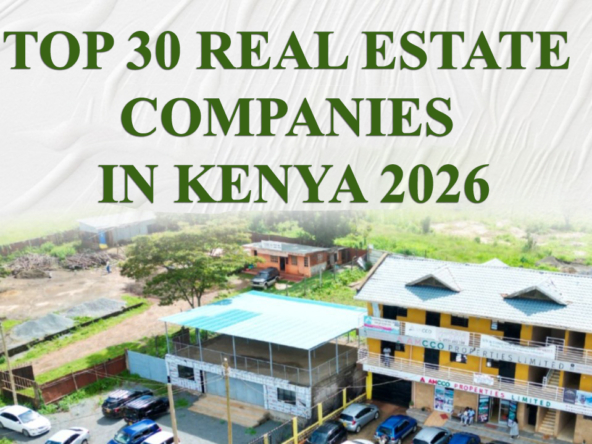Kampala’s commercial real estate sector is currently undergoing a profound transformation, an undeniable rebalancing act driven by significant shifts in fundamental work patterns, evolving consumer behavior, and rapid technological adoption. The traditional paradigm of monolithic office towers and conventional retail spaces is being challenged, leading to increasing vacancy pressures in some segments. Simultaneously, dynamic new models such as flexible workspace solutions and highly adaptable retail assets are rapidly emerging, demonstrating a keen responsiveness to the evolving needs of modern tenants and consumers. This period of intense recalibration in Kampala Commercial Real Estate signals a pivotal moment for investors and developers to adapt and innovate.
Powering the Pivot: Major Market Transformations Unveiled
The shifts in Kampala Commercial Real Estate are not mere trends; they are foundational transformations driven by global phenomena impacting local markets.
Hybrid Work Models: Reshaping Office Dynamics
The post-pandemic era has ushered in a new paradigm of work: the hybrid model. This blend of remote and in-office work has fundamentally altered the demand for conventional, fixed office spaces. By Q1 2025, it’s estimated that hybrid work patterns had reduced the demand for traditional office space in Kampala by approximately 15%. This significant reduction has compelled landlords to rethink their strategies, actively repurposing previously vacant floors into high-demand coworking hubs and flexible event spaces. These adaptive reuse initiatives cater to businesses seeking agility, reduced overheads, and collaborative environments without the commitment of long-term traditional leases. The shift away from rigid office structures is a direct driver in the evolution of Kampala Commercial Real Estate, forcing a focus on flexibility and shared amenities.
E-commerce Impact: Redefining Retail Spaces
The relentless growth of online shopping, fueled by increased internet penetration and changing consumer habits, has profoundly impacted the performance and design of retail real estate in Kampala. Traditional brick-and-mortar malls, once bastions of consumer activity, have had to adapt to maintain foot traffic. This adaptation manifests in various innovative ways: malls are actively integrating “click-and-collect” zones to facilitate seamless online order pickups, and, more significantly, they are pivoting towards experiential retail. This involves curating spaces that offer entertainment, dining, and lifestyle services rather than solely product sales. By transforming into social hubs and leisure destinations, retail assets in Kampala Commercial Real Estate are striving to provide compelling reasons for consumers to physically visit, complementing rather than competing directly with online commerce.
Logistics & Warehousing: The Rise of E-commerce Backbones
The exponential rise of third-party logistics (3PL) providers, driven by the demands of e-commerce and more complex supply chains, has triggered a significant surge in demand for modern warehouse and distribution centers. Along strategic corridors such as the Kampala–Masaka and Kampala–Jinja roads, purpose-built logistics facilities are becoming critical infrastructure. These centers enable efficient storage, sorting, and last-mile delivery, acting as the backbone for expanding online retail and manufacturing operations. The demand for well-located, high-spec warehousing, often featuring advanced security, efficient loading docks, and ample parking, is a burgeoning sector within Kampala Commercial Real Estate, signifying a shift in investment focus towards industrial and logistical assets.
Overcoming Obstacles: Pressing Challenges in Commercial Property
Despite the dynamic transformations, the Kampala Commercial Real Estate sector grapples with notable challenges that require strategic intervention.
Vacancy Pressures: A Tenant’s Market Emerges
One of the most immediate challenges facing Kampala Commercial Real Estate is the rising vacancy rates, particularly within the Grade A office stock. By Q1 2025, these vacancy rates had climbed to a concerning 28%. This surplus of available space has exerted downward pressure on rental prices, reducing average rents from approximately UGX 45,000 to UGX 38,000 per square meter per month. This shift creates a tenant’s market, where businesses have more leverage in negotiating lease terms and demanding higher quality amenities. For landlords, high vacancies translate to reduced income and increased operational costs, necessitating adaptive strategies to attract and retain tenants in a competitive environment.
Retail Repositioning: The Mall Revitalization Imperative
The declining footfall in many traditional malls, a direct consequence of e-commerce growth and changing consumer habits, presents a significant repositioning challenge for owners in Kampala Commercial Real Estate. Landlords are increasingly compelled to invest substantial capital in retrofitting and revitalizing their assets. This often involves expanding and enhancing food courts, introducing diverse entertainment attractions (like cinemas, arcades, or indoor play areas), and even undertaking full-scale mixed-use conversions to integrate residential or office components. The goal is to transform malls from mere shopping destinations into vibrant community hubs that offer a complete lifestyle experience, thereby ensuring their long-term viability and attracting consistent visitor numbers.
Infrastructure Dependencies: Connectivity Gaps
The reliability of essential infrastructure, particularly consistent power supply and robust fiber optic connectivity, remains an inconsistent factor impacting Kampala Commercial Real Estate. While progress is being made, unreliable utilities can deter potential tenants, especially those operating digital-first businesses or requiring uninterrupted operations. Inconsistent power directly impacts productivity and increases reliance on costly generators, while poor internet connectivity hinders modern business operations. These infrastructure dependencies can reduce tenant willingness to commit to longer leases and ultimately erode the perceived value and premium rental potential of otherwise well-located commercial properties. Addressing these gaps is crucial for the sector’s continued growth.
Private Sector Innovation: Adaptive Responses and New Models
The private sector in Kampala Commercial Real Estate is demonstrating remarkable agility, pioneering innovative responses to market shifts and creating new opportunities.
Coworking Growth: Flexible Spaces Flourish
In response to the demand for flexibility, coworking operators like Hive Colab and Co-Working Uganda have significantly expanded their footprints. In 2024, these key players increased their operational spaces by an impressive 30%. They are offering attractive solutions such as flexible leasing terms, “plug-and-play” ready offices, and curated community events designed to foster networking and collaboration. This model appeals strongly to startups, freelancers, small and medium-sized enterprises (SMEs), and even larger corporations looking for agile satellite offices. The burgeoning coworking segment is a testament to the adaptive nature of Kampala Commercial Real Estate, proving that demand for physical workspace persists, albeit in a more flexible format.
Mall Retrofits: Reinventing Retail Assets
Underperforming malls are undergoing strategic retrofits, showcasing a proactive approach to repositioning in Kampala Commercial Real Estate. A prime example is Acacia Mall, which has undergone significant transformation, integrating diverse offerings such as health centers, educational facilities, and dedicated coworking zones. This multi-faceted approach creates diversified revenue streams beyond traditional retail, making these assets more resilient to market fluctuations. By transforming into mixed-use destinations, these malls are attracting a broader range of visitors for different purposes, revitalizing their economic viability and ensuring their relevance in the evolving urban landscape.
Industrial Parks: Building for Logistics and Manufacturing
Recognizing the escalating demand for modern industrial and logistics facilities, the Uganda Industrial Park Consortium launched Phase II of Namanve Industrial Park. This massive undertaking adds an impressive 200,000 square meters of built-to-suit facilities specifically designed for manufacturing and logistics operations. These state-of-the-art facilities offer tailored solutions for businesses, featuring advanced infrastructure, ample storage, and strategic locations along key transport arteries. The development of such large-scale industrial parks is a critical response to the growth of e-commerce and local production, solidifying the importance of the industrial segment within Kampala Commercial Real Estate.
Strategic Investor Implications: Capitalizing on the New Landscape
For investors navigating the evolving Kampala Commercial Real Estate sector, understanding these shifts and adopting proactive strategies is key to unlocking new opportunities and safeguarding investments.
Adaptive Reuse Potential: Convert and Conquer
The current market conditions present significant adaptive reuse potential. Investors can capitalize on converting underutilized traditional office blocks into high-demand flexible coworking spaces or dynamic mixed-use developments that blend residential, retail, and office functions. This strategy allows investors to repurpose existing assets, reduce holding costs, and tap into growing segments of the Kampala Commercial Real Estate market that are less susceptible to traditional office vacancies. Identifying properties suitable for conversion and assessing their highest and best use is a critical skill in this evolving market.
Diversification Benefits: Hedging Against Downturns
A shrewd investment strategy in the current Kampala Commercial Real Estate climate involves portfolio diversification. Combining assets across different commercial sectors—such as traditional retail, modern office spaces (including flexible ones), and vital logistics properties—can effectively hedge against sector-specific downturns. For instance, if the office market faces a slowdown, strong performance in the logistics or specialized retail segments can offset losses. This balanced approach creates a more resilient investment portfolio, protecting against volatility and maximizing overall returns within the diverse Kampala Commercial Real Estate landscape.
Infrastructure Investments: The Connectivity Advantage
Investing in robust infrastructure directly within commercial assets can unlock premium rents and significantly enhance tenant retention. Partnerships with major telecom providers to ensure high-speed fiber connectivity, and collaboration with power providers to ensure consistent and reliable electricity, are becoming increasingly vital. Properties that offer superior connectivity and utility reliability become highly attractive to businesses, especially those reliant on digital operations. This strategic investment in underlying infrastructure can command higher rents and reduce tenant churn, offering a competitive edge in Kampala Commercial Real Estate.
Conclusion: A Dynamic Future for Kampala’s Commercial Property
Kampala’s commercial real estate sector is undeniably at an inflection point, gracefully but determinedly shifting away from its traditional models towards dynamic hybrid, mixed-use, and logistics-driven frameworks. The prevailing forces of hybrid work, e-commerce acceleration, and a burgeoning demand for warehousing are not just reshaping spaces but redefining investment priorities. For stakeholders to thrive, success will profoundly hinge on their willingness to embrace adaptive reuse strategies, make proactive investments in vital connectivity, and diversify property types within their portfolios. Those who meticulously track these evolving trends and strategically pivot their approaches will undoubtedly lead the transformation of Kampala Commercial Real Estate, ensuring its continued growth and profitability well into the future.




